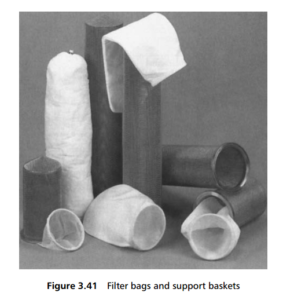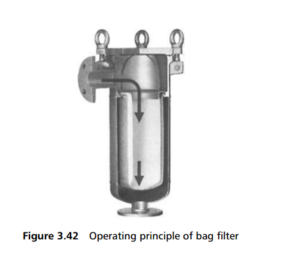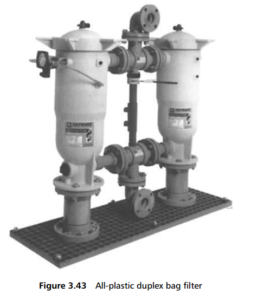0
-
An empty cart
You have no item in your shopping cart
envato-wordpress-toolkit domain was triggered too early. This is usually an indicator for some code in the plugin or theme running too early. Translations should be loaded at the init action or later. Please see Debugging in WordPress for more information. (This message was added in version 6.7.0.) in /var/www/wp-includes/functions.php on line 6121g5plus-darna domain was triggered too early. This is usually an indicator for some code in the plugin or theme running too early. Translations should be loaded at the init action or later. Please see Debugging in WordPress for more information. (This message was added in version 6.7.0.) in /var/www/wp-includes/functions.php on line 6121Filter bags for liquids are effective in removing particulate contaminants in the processing of a wide variety of materials. Bag filtration is a pressure-driven operation, wherein the product to be filtered is forced through the filter unit. Such a unit
would normally consist of the filter housing, a retaining basket and the filter bag.
Generally speaking, liquid bag filters are used for the same purpose, but for a finer degree of filtration than that for which the strainers of Section 3B would be used. They provide filtration systems for small solid particles of particle size in the
1–1200 micrometre range, with flow rates between 1 and 1000 m3/hr and for low solid concentrations.
In operation, bags in the form of woven mono and multifilament fabrics, needlefelts or meltblown nonwoven fibres are fitted with a top seal arrangement to enable their location and sealing into a suitable housing vessel. In view of the potential high differential pressures that can develop across the bag, it is normal practice to provide, within the housing, a support framework of some kind, either a cage made of metal rods, or a basket made from perforated metal or wire mesh. The basket retains the bag in position and protects the system against the bursting of the bag. The basket can also be used to lift out a full bag when the filter is to be renewed. Figure 3.41 shows some examples of liquid filter bags, with support baskets.
Flow of contaminated liquid is usually from the inside of the bag to its outside, with filtration occurring on the inner face of the bag, predominantly by surface filtration (followed by cake formation), with a degree of depth filtration with felted
media. Figure 3.42 shows the principle of operation of the liquid bag filter. (There is no strong reason why filtration should not occur in the opposite direction, with the bag supported on a cage – as is mostly the case with gas filtration in bag filters. The layer of collected contaminants now forms on the outside of the bag, from which it can be blown, by a reverse flow of liquid, to accumulate in the base of the housing, from which it is blown out periodically.)
Modern filter media technology has enabled filter bags to be manufactured in a variety of materials offering ratings of between 1 and 1200um. These materials include nylon, polypropylene, polyester, porous PTFE film and other fluoropolymers, viscose, aromatic polyamides, felts and woven wool. The filter bag was a very popular item for decades, but lost its popularity when finer filtration demands could not accept the uneven porosities represented by the holes in the stitched seam. The development of seamless bags in these various materials has restored the liquid bag filter to its earlier
popularity. One piece glass-reinforced polypropylene all-plastic bag filters are extremely corrosion resistant, and can replace more expensive filters with plastic-lined housings in many applications; they can handle temperatures up to 50% higher than PVC filters .
Most liquid bag filters are of the single bag in a single housing type. Flow through such a unit must be stopped when the pressure drop across it indicates that the maximum dirt-holding capacity has been reached. Bag filters can also be used, in this polishing role, in a duplex housing, with two bags side by side, and piped so that each is either on-line, filtering, or off-line, being cleaned (as shown in Figure 3.43).


Several bags can be housed in one vessel, supported from the same tube plate, and operated in parallel. This arrangement (very common in the bag houses used for gas filtration) is akin to a candle filter, and is described later in this section.
